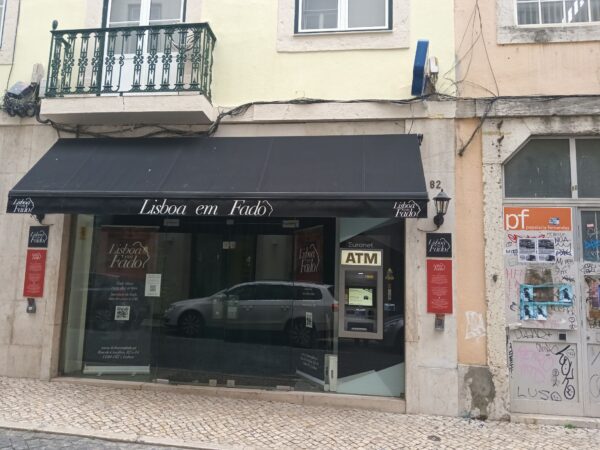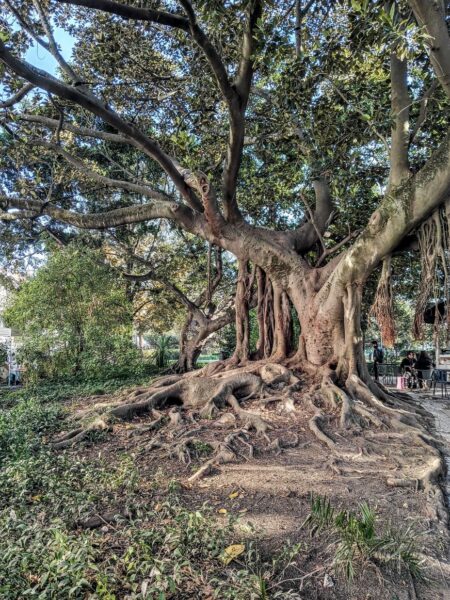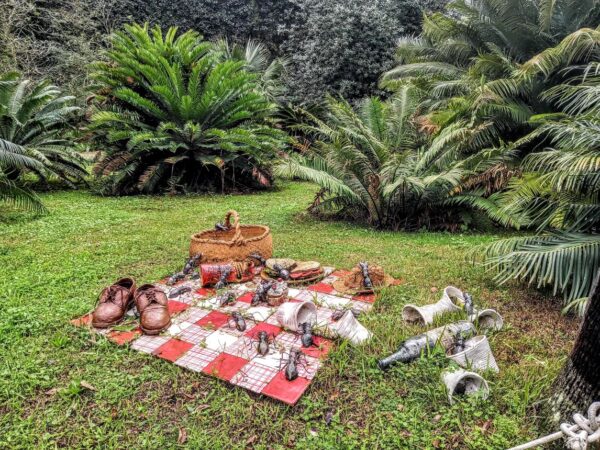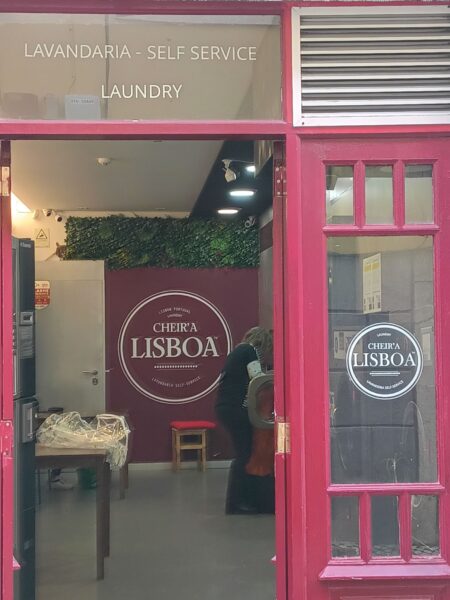My family’s visit was nearing their scheduled return to the U.S. but a few activities remained on the schedule before their departure. These began Monday night after our return from the Oceanarium.
A pair of backstories.
I hadn’t seen my grandnephews for several years so when they were visiting my sister last June in Atlanta, I flew down to reconnect and to try to get a sense of what they might like to do when they came to Lisboa. I believe it’s important for anyone who visits Lisboa or Coimbra to attend a fado show. Fado is not only considered a UNESCO Intangible Cultural Heritage but it is, in many ways, the soul of Portugal as I wrote about on my first visit.
At that time, a few elements conspired to not include it my planning – not the least of which was my sister’s negative reaction to the fado sample I randomly chose to play. However, by the time their visit neared and understanding that fado is an important part of the Portugal experience, she’d changed her mind. In addition, in the two weeks I was here before they arrived I found a venue that I thought would provide a compromise.
A traditional fado show often starts after 21:00 and continues until well after midnight. In many fado houses where you have a fixed price meal (and my grandnephews’ dietary preferences factored into every restaurant choice we made), it can be among the more expensive evenings you’ll spend in Lisboa. Late and expensive with a possibly unsatisfying meal for the boys and music sung in a foreign language was an unpromising combination.
However, while wandering through the neighborhood, I found what proved to be the ideal middle ground just steps from the Baixa-Chiado Metro on rua do Crucifixo – a venue called Lisboa em Fado.

It’s a small room that accommodates about 30 or 40 people with an hour long show beginning at 18:00. It includes a glass of port for the adults and water for the teens. And I discovered, it too, has an interesting backstory.
Lawyer, Musician, Entrepreneur
I can’t tell you whether Diogo Lucena e Quadros had an exceptionally successful career as an attorney but I do know that he began studying the Portuguese guitar at age 18 and that, according to his biography on the Lisboa em Fado website, studied with some of the preeminent instrumentalists in the history of fado. Sometime in the past few years, his passion for fado overtook his career and he established Lisboa em Fado.
His goal is to bring fado to as many people as possible and he understands that not all visitors to Lisboa want a full meal with their fado nor might they want to start (and possibly end) their evening’s entertainment at the late hours of the most traditional fado shows. Staging his show at 18:00 (with some plans to add additional shows) allows him to bring in a rotating cast of very talented singers and musicians.
My scribbled note from the evening with the performers’ names turned out to be barely legible but I bellieve we saw a male singer named Mario, Rogério Ferreira who played the viola (6 string classical guitar), Diogo himself on the Fado Guitar, and in a rare appearance, Ana Magarida was the female fadista whom you can see in this video recorded for the Museu do Fado.
In addition to the performance and the wine, the evening also includes three short videos introducing the audience to the history of fado and some of its great performers with a final section devoted to the legendary fadista Amália Rodrigues seen here singing her composition, Cheira a Lisboa (It smells like Lisbon), one of the songs in which the performers at Lisboa em Fado encourage audience participation – something else not found in a typical fado show – that adds a jolt of energy to the show’s end.
Needless to say, everyone enjoyed it and I even returned later in my stay to see an entirely different group of performers with whom I chatted in a mixture of English and Portuguese for several minutes after the show. You can see some photos of the interior and a short video of the second performance in this album.
Foolishness can happen
Tuesday has arrived. It’s the last full day my family will be in Lisboa and the main activity comes at the request of ME – a visit to the Botanical Garden. Early in the trip we went to the Estufa Fria but since I’ve written about that previously I didn’t detail it this time. However, it apparently impressed ME enough that it inspired him to want to go to the Botanical Garden.
When you walk around a city as much as I walk around Lisboa, you make discoveries. In Lisboa, one of these – as my grandnephews discovered on their Castle visit – is that Lisboa is in many ways quite compact. There’s a bit of a paradox because it feels bigger and when you walk a lot, you realize how long it can take to cover a relatively short distance – especially when negotiating some of this city’s hills. And the Botanical Garden of Lisboa is one of those places that’s simultaneously near and far.
The actual distance from our location in Baixa is close to what my American friends would call a metric mile or about 1,500 meters. That’s not far until you encounter the requisite ascent of about 50 meters in a condensed distance of 200 meters. Thus, we took a shorter walk and made the ascent on the Elevador da Gloria which deposited us near the Miradouro de São Pedro de Alcântara. This left us a short, relatively flat walk of about 500 meters.
On our way, I took them through the Parque Principe Real to see several remarkable looking banyan fig trees with aerial roots that will eventually reach the ground after sprouting from its branches like this one

and the tree I call “the bonsai that ate the park” but whose entirety and impact I couldn’t capture in a photograph.
Fortunately, I’d put the Botanical Garden’s location on my radar before my family arrived because although it covers a bit over four hectares, it’s quite easy to walk past its entrance on the rua da Escola Politécnica. Constructed over a 15 year period beginning in 1858, it has more than 18,000 species of plants and contains among the largest collections of subtropical vegetation in Europe.
In addition the garden’s variety and serenity, we encountered a bit of whimsy – dare I say foolishness – in the presence of a temporary installation of sculpture by Sylvain and Tara Bongard and that will be on display only until June 2024.

When we left the Botanical Garden (additional photos are here) we walked down the hill to Largo do Rato where we had a big lunch at the Cervejaria Real Fábrica served by a harried but very friendly waiter. As a bit of a final surprise, we rode the Metro to Campo Grande where, since they weren’t able to attend a game there, I was able to take a photo of my grandnephews in front of Estádio José Alvalade the home of Sporting FC.

From there, it’s a very short walk to one of my favorite Lisboa spots Jardim Bordalo Pinhero that I first visited in May 2022. While I doubt this will be one of their strongest memories, I’m hopeful they enjoyed the time we spent there.
Since their flight departed at 05:00 Wednesday, we said our goodbyes after dinner Tuesday night. However, my time entertaining visitors in Lisboa isn’t done. My friends K & P arrive from California just a few hours after my sister and family depart. I’ll begin those reports in the next post.
As a postscript, I’ll add another bit of foolishness that happened late in my stay. I was wandering through an unfamiliar part of Bairro Alto when I spotted this business.

Recall the Amália composition in the video above and this becomes a curiously clever name for a self service laundry.